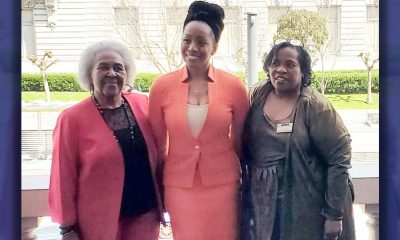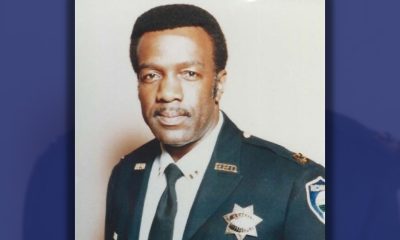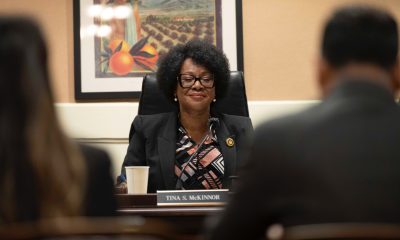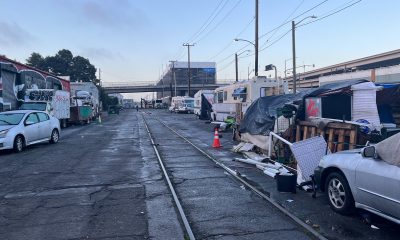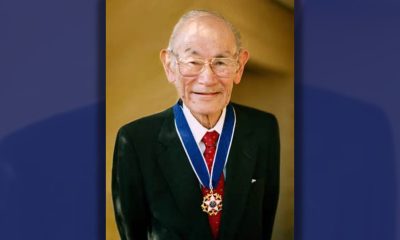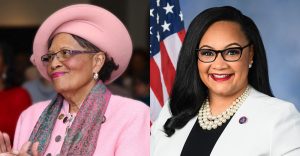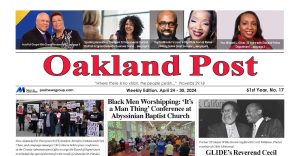Business
Workforce Development Board Chair Wants to Extend Youth Opportunities
Advocates in California committed to improving the skills of individuals to meet the human resource needs of the state want to see more diversity among young people joining the workforce. Dr. Angelo Farooq, Chair of the California Workforce Development Board (CWDB), says he’s proud of the work his office has done to connect young people from diverse backgrounds to opportunities in various fields — but more needs to be done.
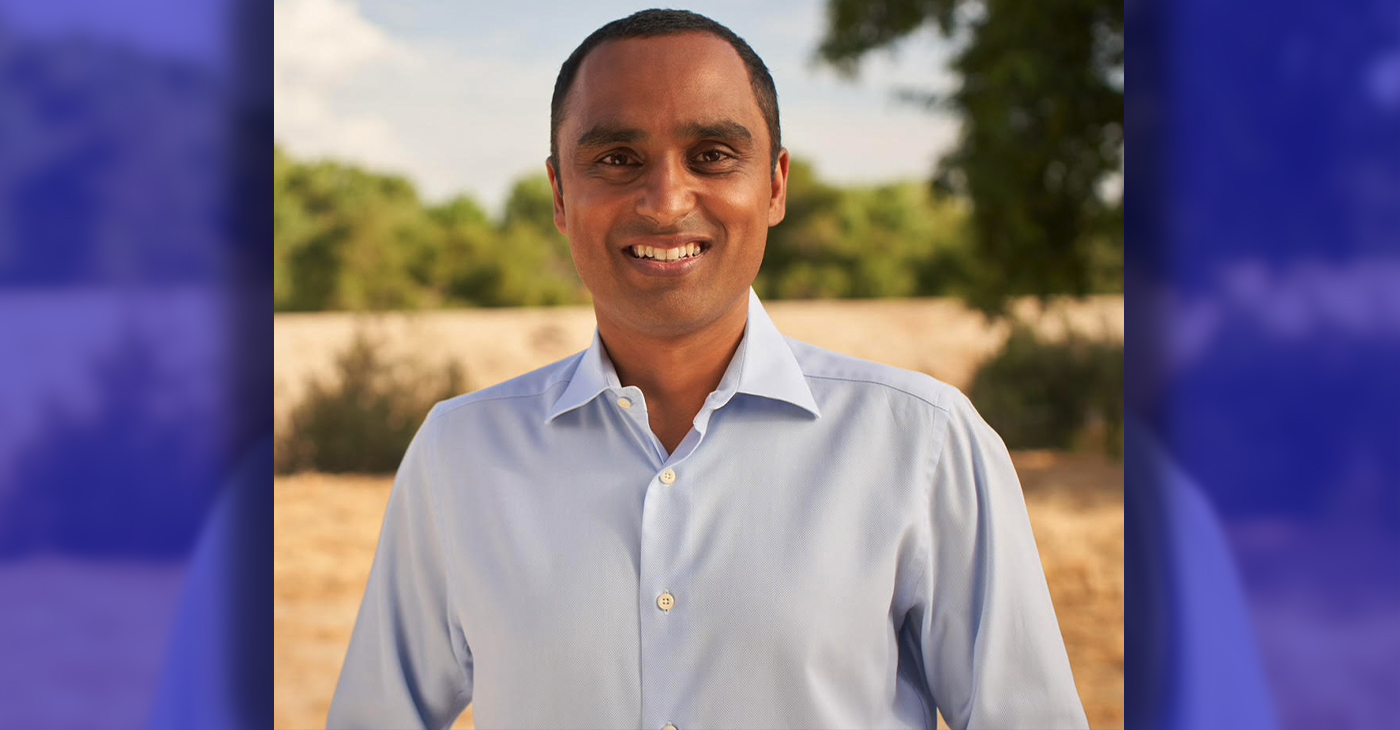
By Max Elramsisy
California Black Media
Advocates in California committed to improving the skills of individuals to meet the human resource needs of the state want to see more diversity among young people joining the workforce.
Dr. Angelo Farooq, Chair of the California Workforce Development Board (CWDB), says he’s proud of the work his office has done to connect young people from diverse backgrounds to opportunities in various fields — but more needs to be done.
The CWDB is a board reporting to the Governor that is charged with overseeing and strengthening the state’s workforce development system, governing all federal workforce funds coming into the state, and developing a common policy framework for related programs.
“The CWDB partners with other governmental entities such as the Department of Rehabilitation, Department of Education, and Department of Social Services to leverage funding to facilitate access to work experience opportunities for youth, including paid state internship programs,” Farooq told California Black Media (CBM).
Farooq, who was appointed Chair of the National Association of State Workforce Board Chairs (NASWBC) in August, says the CWDB also partners with non-profit organizations to open pathways to careers for young Californians.
“The CWDB received approval from the federal Department of Labor on a Workforce Innovation and Opportunity Act (WIOA) waiver that targets systems-involved youth – that is homeless or housing insecure, foster care, and justice involved youth,” Farooq added. “This waiver allows Local Workforce Development Boards additional flexibility in the way they use their youth funding to specifically target systems-involved youth before they disconnect from the school system.”
In August the Legislature passed ACR 16, a resolution that requires the state to “develop a statewide plan that will reduce persistent economic inequities endured by California’s youth,” according to the bill’s language.
The 2021 American Community Survey (ACS) of the United States Census reported that 572,756 youth in California 16 to 24 years of age were neither in school nor at work.
For Black and other minority youth, the statistics are more dire. At 22.3%, the rate of Black teens and young adults, 16 to 24 years old, who are disconnected from the educational system and workforce was more than two times higher the number for their White peers, which was 10.9%.
Farooq said CWDB is currently working to expand its youth portfolio; the CWDB will deepen the partnership work in order to develop a statewide plan that will aim to reduce persistent economic inequities for “opportunity youth.”
Although, addressing youth unemployment is a top priority for the CWDB, the board does not limit its programs and advocacy to young people.
The agency develops initiatives designed to create work pipelines for targeted disadvantaged groups, including formerly incarcerated and justice-involved individuals, as well as pathways to employment in growing industries like construction and infrastructure.
In September, The U.S. Department of Labor awarded a $5 million grant to the CWDB under the Building Pathways to Infrastructure Jobs Grant Program, the largest amount awarded to an agency of its kind in the country. Under Farooq’s purview as chair of the NASWBC, it is the first time California has lead workforce development initiatives on the national level.
“I am honored to have the trust and confidence of my colleagues across the nation,” said Farooq, after he was elected. “In my five years serving as Chair of the CWDB, we have expanded high road partnerships to new sectors, established construction partnerships in every corner of our state, and much more. I look forward to working with my fellow workforce development board chairs to share what has worked here in California and how we can extend economic opportunity to more Americans.”
The NASWBC is an affiliate of the National Governors Association (NGA) Center for Best Practices, which supports administration and meetings for the Association. Members of the association are the chairs of Governor-appointed state workforce development boards. The Association provides a vehicle for state workforce board chairs and staff directors to learn from the experiences of their peers, share best practices and find common ground on national policy issues.
“Dr. Farooq has been instrumental in building a high-road economy here in California,” said Secretary Stewart Knox of California’s Labor & Workforce Development Agency.
“Under Governor Newsom’s leadership, Dr. Farooq and the CWDB have over $1 billion in workforce investments in the field today and are leading the way in creating good jobs and meeting the workforce needs of California businesses,” Knox added, praising his colleague who is also President of the Board of Education for Riverside Unified School District (RUSD).
After Farooq’s election to the NASWBC, United States Secretary of Labor Julie Su sent her congratulations.
“Congratulations to my friend, former colleague, and fellow Californian Angelo Farooq on his election today,” she said. “The National Association of State Workforce Board Chairs is in the hands of a committed and creative leader.”
“Angelo knows that the workforce system plays an important role in connecting employers with the diverse, skilled workforce they need and workers with the high-quality jobs they deserve, including workers from historically underserved communities or those facing significant barriers to employment,” she added.
Activism
Oakland Post: Week of April 24 – 30, 2024
The printed Weekly Edition of the Oakland Post: Week of April 24 – 30, 2024
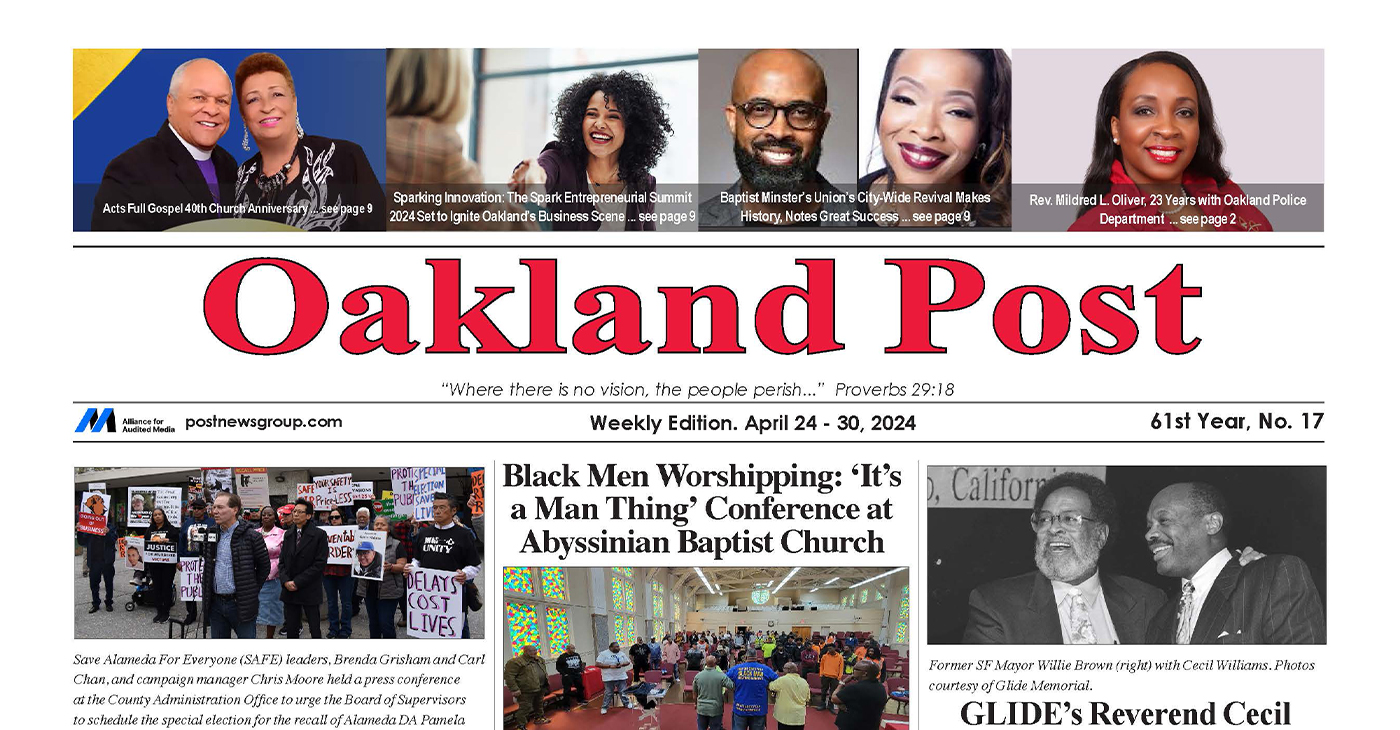
To enlarge your view of this issue, use the slider, magnifying glass icon or full page icon in the lower right corner of the browser window. ![]()
Bay Area
State Controller Malia Cohen Keynote Speaker at S.F. Wealth Conference
California State Controller Malia Cohen delivered the keynote speech to over 50 business women at the Black Wealth Brunch held on March 28 at the War Memorial and Performing Arts Center at 301 Van Ness Ave. in San Francisco. The Enterprising Women Networking SF Chapter of the American Business Women’s Association (ABWA) hosted the Green Room event to launch its platform designed to close the racial wealth gap in Black and Brown communities.
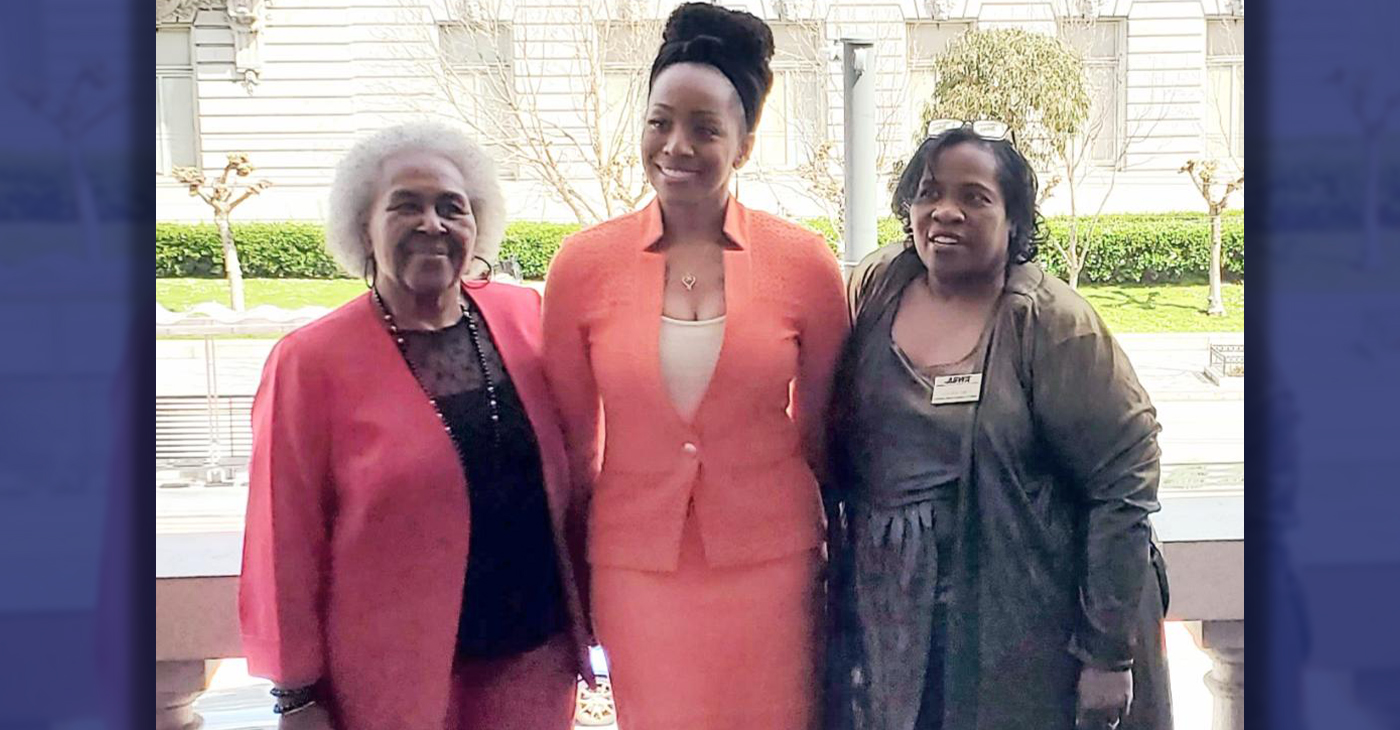
By Carla Thomas
California State Controller Malia Cohen delivered the keynote speech to over 50 business women at the Black Wealth Brunch held on March 28 at the War Memorial and Performing Arts Center at 301 Van Ness Ave. in San Francisco.
The Enterprising Women Networking SF Chapter of the American Business Women’s Association (ABWA) hosted the Green Room event to launch its platform designed to close the racial wealth gap in Black and Brown communities.
“Our goal is to educate Black and Brown families in the masses about financial wellness, wealth building, and how to protect and preserve wealth,” said ABWA San Francisco Chapter President LaRonda Smith.
ABWA’s mission is to bring together businesswomen of diverse occupations and provide opportunities for them to help themselves and others grow personally and professionally through leadership, education, networking support, and national recognition.
“This day is about recognizing influential women, hearing from an accomplished woman as our keynote speaker and allowing women to come together as powerful people,” said ABWA SF Chapter Vice President Velma Landers.
More than 60 attendees dined on the culinary delights of Chef Sharon Lee of The Spot catering, which included a full soul food brunch of skewered shrimp, chicken, blackened salmon, and mac and cheese.
Cohen discussed the many economic disparities women and people of color face. From pay equity to financial literacy, Cohen shared not only statistics, but was excited about a new solution in motion which entailed partnering with Californians for Financial Education.
“I want everyone to reach their full potential,” she said. “Just a few weeks ago in Sacramento, I partnered with an organization, Californians for Financial Education.
“We gathered 990 signatures and submitted it to the [California] Secretary of State to get an initiative on the ballot that guarantees personal finance courses for every public school kid in the state of California.
“Every California student deserves an equal opportunity to learn about filing taxes, interest rates, budgets, and understanding the impact of credit scores. The way we begin to do that is to teach it,” Cohen said.
By equipping students with information, Cohen hopes to close the financial wealth gap, and give everyone an opportunity to reach their full financial potential. “They have to first be equipped with the information and education is the key. Then all we need are opportunities to step into spaces and places of power.”
Cohen went on to share that in her own upbringing, she was not guided on financial principles that could jump start her finances. “Communities of color don’t have the same information and I don’t know about you, but I did not grow up listening to my parents discussing their assets, their investments, and diversifying their portfolio. This is the kind of nomenclature and language we are trying to introduce to our future generations so we can pivot from a life of poverty so we can pivot away and never return to poverty.”
Cohen urged audience members to pass the initiative on the November 2024 ballot.
“When we come together as women, uplift women, and support women, we all win. By networking and learning together, we can continue to build generational wealth,” said Landers. “Passing a powerful initiative will ensure the next generation of California students will be empowered to make more informed financial decisions, decisions that will last them a lifetime.”
Business
Black Business Summit Focuses on Equity, Access and Data
The California African American Chamber of Commerce hosted its second annual “State of the California African American Economy Summit,” with the aim of bolstering Black economic influence through education and fellowship. Held Jan. 24 to Jan. 25 at the Westin Los Angeles Airport Hotel, the convention brought together some of the most influential Black business leaders, policy makers and economic thinkers in the state. The discussions focused on a wide range of economic topics pertinent to California’s African American business community, including policy, government contracts, and equity, and more.
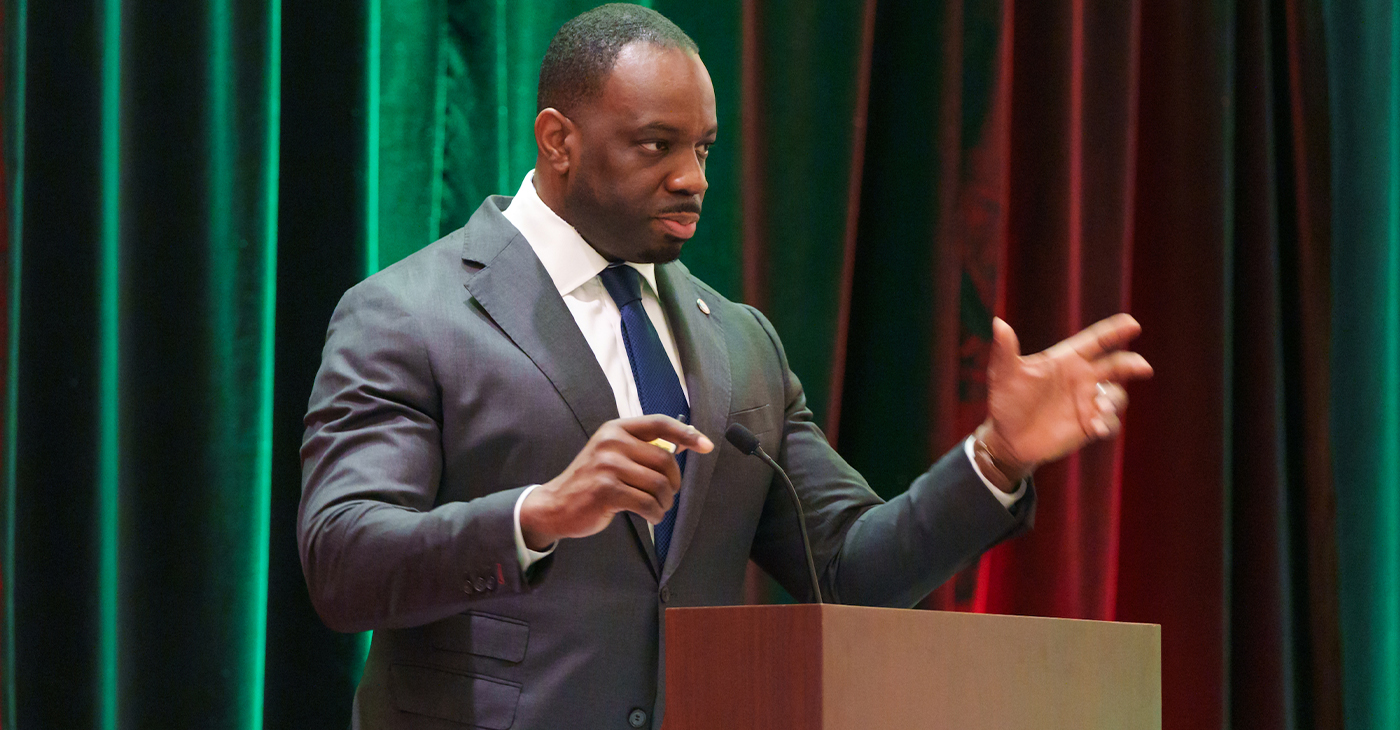
By Solomon O. Smith, California Black Media
The California African American Chamber of Commerce hosted its second annual “State of the California African American Economy Summit,” with the aim of bolstering Black economic influence through education and fellowship.
Held Jan. 24 to Jan. 25 at the Westin Los Angeles Airport Hotel, the convention brought together some of the most influential Black business leaders, policy makers and economic thinkers in the state. The discussions focused on a wide range of economic topics pertinent to California’s African American business community, including policy, government contracts, and equity, and more.
Toks Omishakin, Secretary of the California State Transportation Agency (CALSTA) was a guest at the event. He told attendees about his department’s efforts to increase access for Black business owners.
“One thing I’m taking away from this for sure is we’re going to have to do a better job of connecting through your chambers of all these opportunities of billions of dollars that are coming down the pike. I’m honestly disappointed that people don’t know, so we’ll do better,” said Omishakin.
Lueathel Seawood, the president of the African American Chamber of Commerce of San Joaquin County, expressed frustration with obtaining federal contracts for small businesses, and completing the process. She observed that once a small business was certified as DBE, a Disadvantaged Business Enterprises, there was little help getting to the next step.
Omishakin admitted there is more work to be done to help them complete the process and include them in upcoming projects. However, the high-speed rail system expansion by the California High-Speed Rail Authority has set a goal of 30% participation from small businesses — only 10 percent is set aside for DBE.
The importance of Diversity, Equity and Inclusion (DEI) in economics was reinforced during the “State of the California Economy” talk led by author and economist Julianne Malveaux, and Anthony Asadullah Samad, Executive Director of the Mervyn Dymally African American Political and Economic Institute (MDAAPEI) at California State University, Dominguez Hills.
Assaults on DEI disproportionately affect women of color and Black women, according to Malveaux. When asked what role the loss of DEI might serve in economics, she suggested a more sinister purpose.
“The genesis of all this is anti-blackness. So, your question about how this fits into the economy is economic exclusion, that essentially has been promoted as public policy,” said Malveaux.
The most anticipated speaker at the event was Janice Bryant Howroyd known affectionately to her peers as “JBH.” She is one of the first Black women to run and own a multi-billion-dollar company. Her company ActOne Group, is one of the largest, and most recognized, hiring, staffing and human resources firms in the world. She is the author of “Acting Up” and has a profile on Forbes.
Chairman of the board of directors of the California African American Chamber of Commerce, Timothy Alan Simon, a lawyer and the first Black Appointments Secretary in the Office of the Governor of California, moderated. They discussed the state of Black entrepreneurship in the country and Howroyd gave advice to other business owners.
“We look to inspire and educate,” said Howroyd. “Inspiration is great but when I’ve got people’s attention, I want to teach them something.”
-

 Activism4 weeks ago
Activism4 weeks agoOakland Post: Week of March 27 – April 2, 2024
-
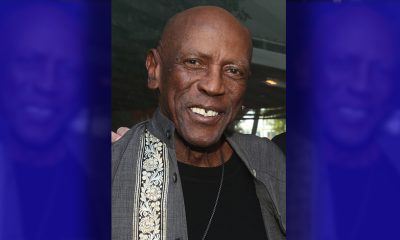
 #NNPA BlackPress4 weeks ago
#NNPA BlackPress4 weeks agoBeloved Actor and Activist Louis Cameron Gossett Jr. Dies at 87
-
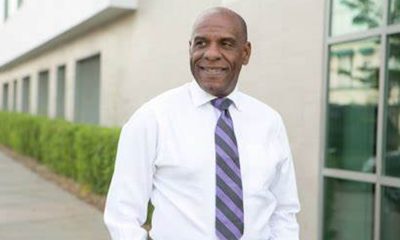
 Community2 weeks ago
Community2 weeks agoFinancial Assistance Bill for Descendants of Enslaved Persons to Help Them Purchase, Own, or Maintain a Home
-
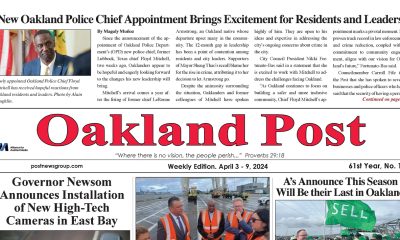
 Activism3 weeks ago
Activism3 weeks agoOakland Post: Week of April 3 – 6, 2024
-
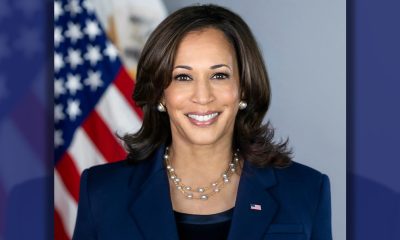
 Business2 weeks ago
Business2 weeks agoV.P. Kamala Harris: Americans With Criminal Records Will Soon Be Eligible for SBA Loans
-
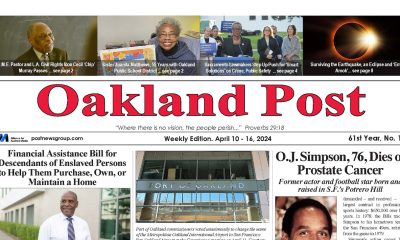
 Activism2 weeks ago
Activism2 weeks agoOakland Post: Week of April 10 – 16, 2024
-
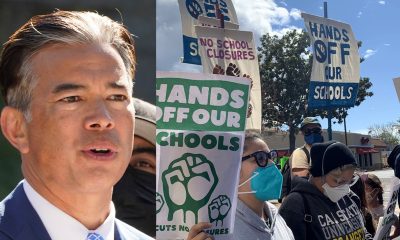
 Community2 weeks ago
Community2 weeks agoAG Bonta Says Oakland School Leaders Should Comply with State Laws to Avoid ‘Disparate Harm’ When Closing or Merging Schools
-
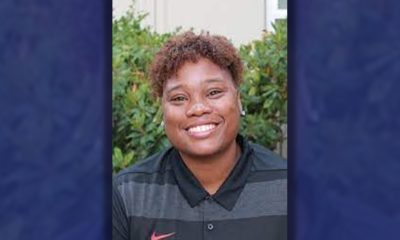
 Community1 week ago
Community1 week agoOakland WNBA Player to be Inducted Into Hall of Fame

